This article was medically reviewed by Erik Kramer, DO, MPH and by wikiHow staff writer, Jennifer Mueller, JD. Dr. Erik Kramer is a Board-Certified Primary Care Physician at the University of Colorado. With over 15 years of experience, his clinical interests include obesity and weight management, diabetes care, and preventive care, as well as embracing a holistic approach to primary care. He received his Doctorate in Osteopathic Medicine (D.O.) from the Touro University Nevada College of Osteopathic Medicine and completed his residency at Central Maine Medical Center. Dr. Kramer is a Diplomate of the American Board of Obesity Medicine.
There are 8 references cited in this article, which can be found at the bottom of the page.
This article has been viewed 43,187 times.
When you damage a ligament, caring for it properly will help it heal as soon as possible. Even though you’ll have to be patient while your ligaments heal completely, there are some things you can do to help speed up your recovery. If you have a doctor assess your injury promptly, eat the right foods, and stay active while protecting the injured joint, you might feel better even sooner.[1] X Research source
Steps
Visit your doctor as soon as possible.
-
Your doctor can more accurately assess the damage to your ligament. Try to get in as soon as you can after the initial injury. From there, your doctor can advise you on how to treat the injury. Your doctor will gently press around the joint to determine which ligaments are injured as well as putting the joint through some gentle range of motion exercises to determine the degree of the injury.[2] X Research source
- A diagnosis of a Grade 1 sprain indicates slight stretching and microscopic tearing of the ligament fibers. It should heal with basic treatment at home within a week or two.
- If you have a Grade 2 sprain, the ligament is partially torn. A Grade 2 sprain typically causes moderate tenderness or swelling around the joint. It usually takes 3 to 4 weeks to recover from a Grade 2 sprain.
- The most severe ligament injury is a Grade 3 sprain, which is a complete tear of the ligament. This level of injury typically takes 6 to 12 weeks to heal and may require more extensive physical therapy. In the worst case, you may need surgery to repair the ligament. Recovery and rehabilitation after surgery can take up to a year.
Warning: Don't wait a few days to see if the joint gets any better before going to see your doctor. This may significantly delay your recovery.
Rest the joint in a neutral position.
-
Keep the joint in an unbent relaxed position without putting any weight on it. In the immediate aftermath of a ligament injury, protect the joint and avoid activities that cause pain. [3] X Research source
- For example, if you've injured a ligament in your knee, avoid putting any weight on that leg for at least 2 or 3 days. Your doctor may recommend a longer period of rest if your injury is more severe.
- For knee or ankle sprains, you might find it easier to rest the joint by using a cane or crutches to walk.
- While it’s important to rest a sprain or strain, try practicing range of motion exercises when you stop feeling acute pain or swelling.
Apply ice to the ligament to reduce swelling.
-
Place an ice pack or bag of frozen vegetables on the joint for 15 to 20 minutes. Drape a towel over bare skin so you don't get ice burns. Elevate the joint above your heart while applying ice.[4] X Research source
- It's safe to apply ice 2 or 3 times a day. However, you want to make sure you wait 2 or 3 hours after the first application before you ice your knee again.
Tip: You might get more comfort alternating between heat and ice. Place a heating pad on the joint for 15 to 20 minutes after removing the ice.
Use a brace or wrap to compress the joint.
-
A compression wrap or brace immobilizes the joint and protects it from further damage. It also helps support the joint while your ligament heals. Your doctor may recommend a particular type of brace depending on the type and extent of your injury.[5] X Research source
- Wear the brace at all times when your doctor advises you. Wearing a brace while sleeping might be particularly beneficial since you don't have much control over how you move your body when you're asleep and could re-injure yourself.
- Using a brace for extended periods of time on a grade I or II strain can cause stiffness. Follow your doctor’s instructions, but then remove the brace after 1–2 weeks to practice range of motion and flexibility exercises.
Take non-prescription pain medications as needed.
-
Follow the recommended dosage on the box unless your doctor tells you differently. Over-the-counter pain medications and anti-inflammatories, such as acetaminophen (Tylenol), ibuprofen (Advil, Motrin), or naproxen (Aleve) can help reduce inflammation in your joint and ease pain and discomfort. [6] X Research source
- Avoid taking over-the-counter medications regularly for more than 2 or 3 days. If you're still having significant pain or discomfort after 2 or 3 days, talk to your doctor. You may get better relief from a prescription medication.
Eat larger portions of nutrient-dense foods.
-
Your body needs significant amounts of nutrients to heal. If you're recovering from an injury, you may be tempted to cut back on calories while you're not as active. If you're not eating enough, the lack of nutrients can delay the healing process and set you back further.[7] X Research source
- Foods that are rich in proteins, vitamins, and minerals will help your body heal without a lot of empty calories that could cause you to gain weight while you're recovering.
- Leafy greens, whole grains, lean meats, yogurt, and milk are some foods that are dense in nutrients and can help your body heal more rapidly.[8] X Trustworthy Source Harvard Medical School Harvard Medical School's Educational Site for the Public Go to source
Stock up on fruits and vegetables.
-
Vitamins in fresh greens help repair tissues. Vitamins A and C, found in most fruits and vegetables, help build new protein for your ligaments. Vitamin C also boosts your immune system, which helps reduce inflammation around the injury so you'll bounce back more quickly.[9] X Research source
- Fruits and vegetables rich in vitamin A include carrots, sweet potatoes, Swiss chard, winter squash, and spinach.
- Fruits and vegetables rich in vitamin C include citrus fruits, kiwi, peppers, and broccoli.
Eat lean meats.
-
The protein boost helps stimulate new cell growth. Turkey, fish, and chicken are packed with protein that will help your body repair your damaged tissue more quickly. For optimal recovery time, eat at least 112 grams (about 4 ounces) of protein a day.[10] X Research source
- If you're a vegetarian or vegan, fill your recovery diet with plenty of quinoa, lentils, chickpeas, tofu, spinach, and kale for protein.[11] X Research source
Include eggs and milk in your diet.
-
Calcium and vitamin D help repair bone and muscle. The calcium in dairy products, such as eggs, milk, and yogurt, rebuilds your damaged ligaments to help them heal faster. The vitamin D in milk and other dairy products also helps your body absorb calcium more efficiently.[12] X Research source
- If you're lactose intolerant or are a vegan, eat plenty of dark, leafy greens, including kale, collards, and mustard greens, to get your calcium. Soy, broccoli, and okra are also good sources of calcium.
Add salmon and tuna to your meals.
-
Fatty acids in fish might work to calm inflammation. Fatty fish are rich in omega-3 fatty acids, which help reduce the swelling and inflammation around an injury. If you get enough omega-3 fatty acids in your diet, you may not need to take anti-inflammatory drugs.[13] X Research source
- Flax seeds and walnuts also have omega-3 fatty acids, if you don't eat fish. You might also consider taking an omega-3 supplement, although your body doesn't absorb the fatty acids as well from a supplement as it does from food.
Tip: Ginger and turmeric are also anti-inflammatories that can accelerate your recovery from a torn ligament.
Assess the degree of damage to the ligament.
-
More severe injuries require more physical therapy to heal. If you have a milder injury, you should be able to start exercising relatively quickly as long as you take care to protect the injured joint. However, if you have a more severe injury, you may need to start with more extensive physical therapy.
- Tell your doctor that you want to be physically active again as soon as possible. Find out what kind of exercises you can do and how you can protect the joint while you're exercising.
- For example, your doctor may instruct you to wear a brace on the injured joint and to ice it after you finish exercising.
Use physical therapy to recover your range of motion.
-
Your doctor may prescribe exercises or stretches for you to do. These exercises will vary depending on what ligament you injured and the severity of the injury. Typically, you'll need to do the exercises at least once a day.[14] X Research source
- If you have a moderate injury, your doctor may give you exercises and stretches to do at home on your own. However, if you have a more severe injury, your doctor will likely refer you to a physical therapist.
Try low- and non-impact exercises to get the joint back in motion.
-
Stay away from weight-lifting or impact exercises such as running. In the first few weeks after your injury, continue to protect your injured joint and avoid putting too much weight or stress on it. The types of exercises that will work best for you depend on which ligament you injured. However, in general, you should avoid high-impact exercises that put a lot of pressure on your joints.[15] X Research source
- For example, if you injured a ligament in your knee, you might start with swimming or riding on a stationary bicycle to get your knee moving again.
Tip: Start every exercise session by warming up for at least 10 minutes, then end with a 10-minute cooldown. Incorporating gentle stretches can help your ligament heal properly.
Stabilize the joint when returning to full activity.
-
Continue wrapping the joint or wear a light brace to keep from re-injuring it. Your ligament is likely still somewhat weak after recovery and far more vulnerable.[16] X Research source
- Giving the joint some additional stability allows you to move without having to rely too much on that ligament. A brace or wrap also keeps your bones and ligaments in correct alignment, which can be helpful if you do experience a sudden jolt or twist.
Warnings
- Even though most ankle sprains recover without intervention, see an orthopedic provider if you develop chronic ankle instability.⧼thumbs_response⧽
You Might Also Like
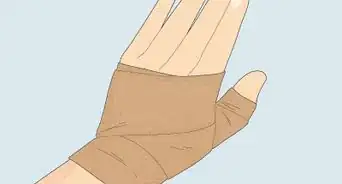
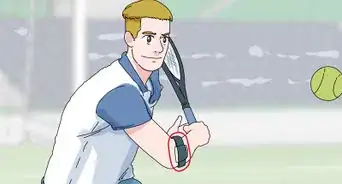
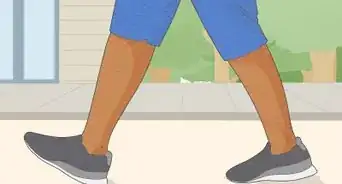
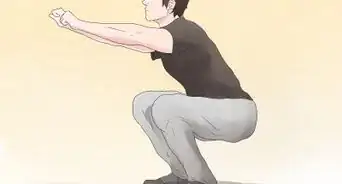
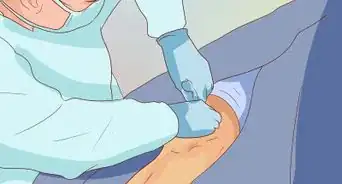
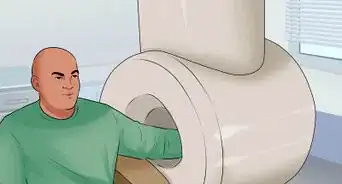
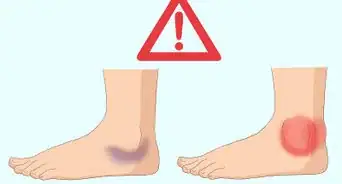
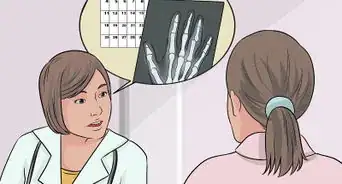
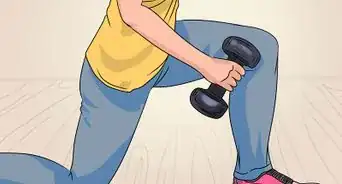
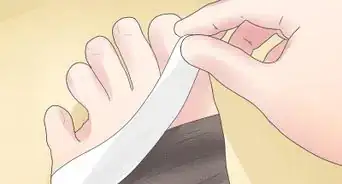
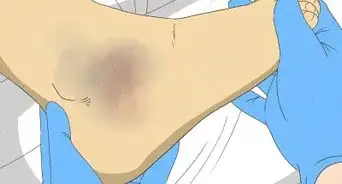 Sleeping with a Sprained Ankle: Bedtime Tips, Daytime Care & More
Sleeping with a Sprained Ankle: Bedtime Tips, Daytime Care & More
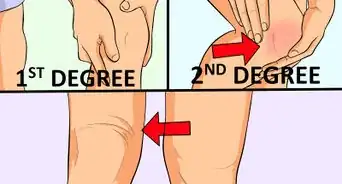
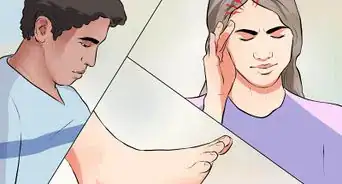
References
- ↑ https://www.outsideonline.com/1786196/how-do-pro-athletes-recover-so-quickly
- ↑ https://orthoinfo.aaos.org/en/diseases--conditions/sprained-ankle/
- ↑ https://orthoinfo.aaos.org/en/diseases--conditions/sprained-ankle/
- ↑ https://www.uptodate.com/contents/knee-pain-beyond-the-basics
- ↑ https://orthoinfo.aaos.org/en/diseases--conditions/sprained-ankle/
- ↑ https://www.uptodate.com/contents/knee-pain-beyond-the-basics
- ↑ https://runnersconnect.net/diet-for-injured-runner/
- ↑ https://www.health.harvard.edu/staying-healthy/add-more-nutrient-dense-foods-to-your-diet
- ↑ https://runnersconnect.net/diet-for-injured-runner/
- ↑ https://www.bicycling.com/health-nutrition/a20052687/eat-these-foods-for-faster-recovery-from-injury-0/
- ↑ https://www.bbcgoodfood.com/howto/guide/best-sources-protein-vegans
- ↑ https://www.bicycling.com/health-nutrition/a20052687/eat-these-foods-for-faster-recovery-from-injury-0/
- ↑ https://runnersconnect.net/diet-for-injured-runner/
- ↑ https://orthoinfo.aaos.org/en/diseases--conditions/sprained-ankle/
- ↑ https://www.outsideonline.com/1786196/how-do-pro-athletes-recover-so-quickly
- ↑ http://journalofprolotherapy.com/ligament-injury-and-healing-an-overview-of-current-clinical-concepts/
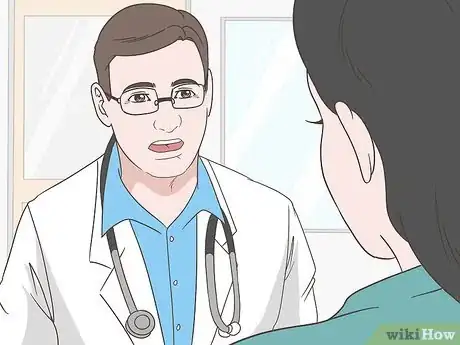
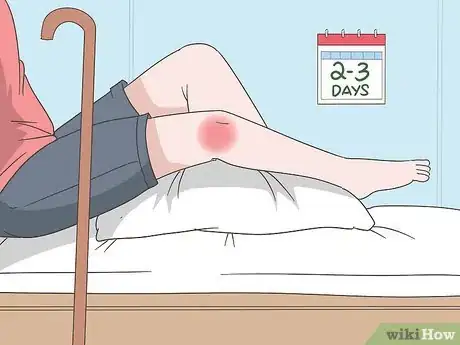
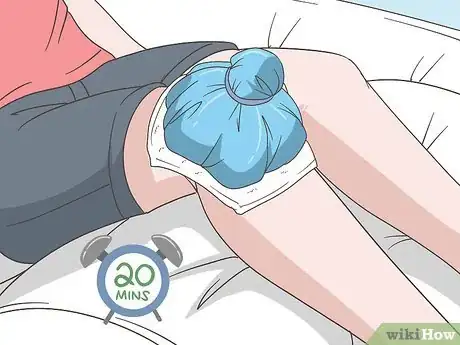
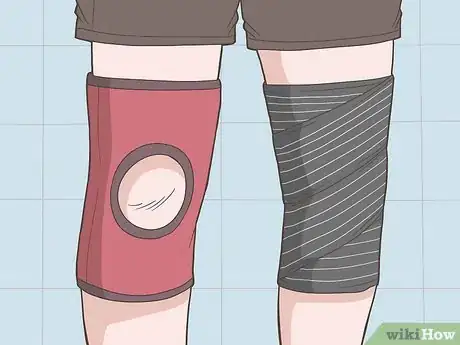
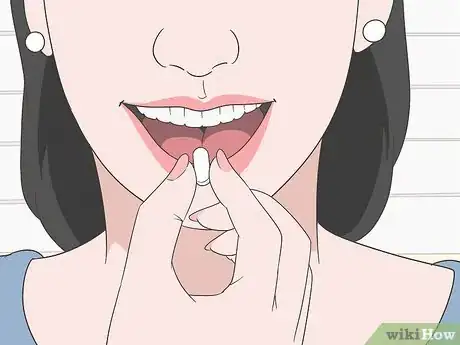
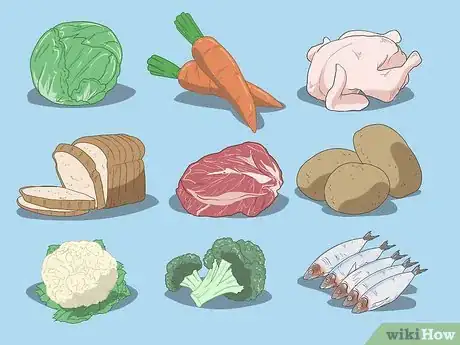
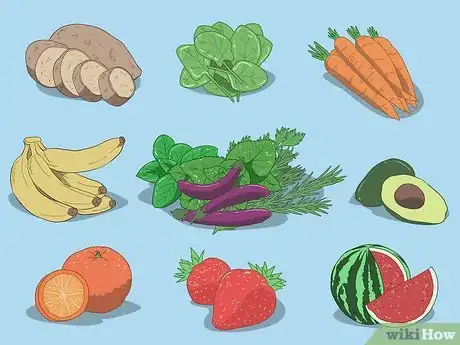
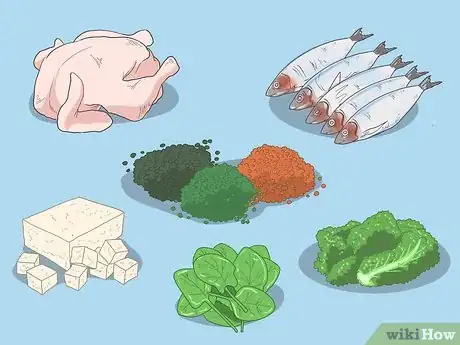
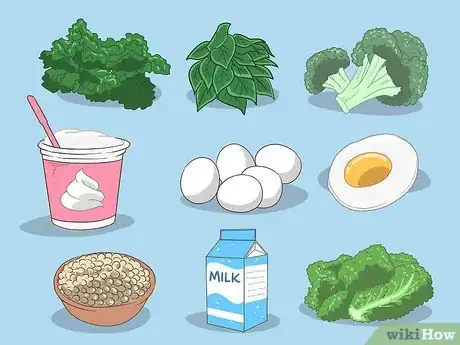
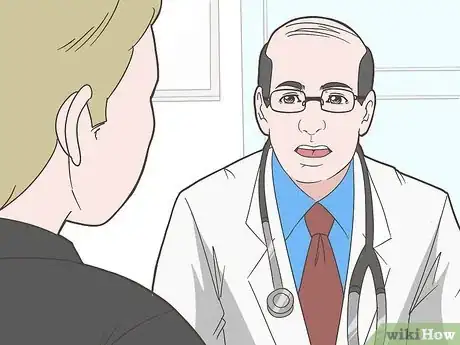
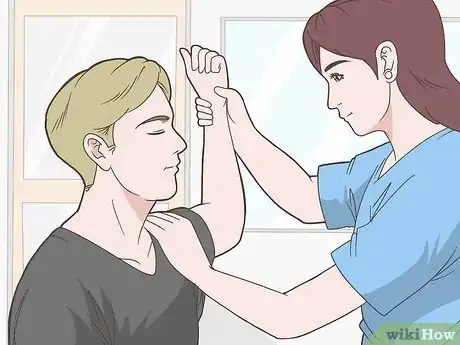
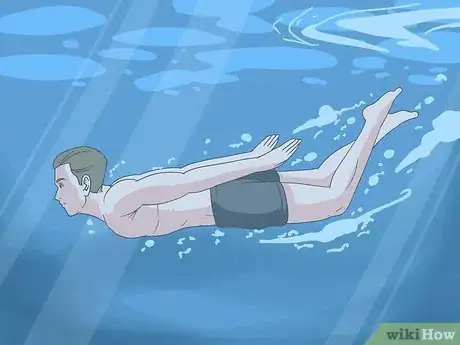
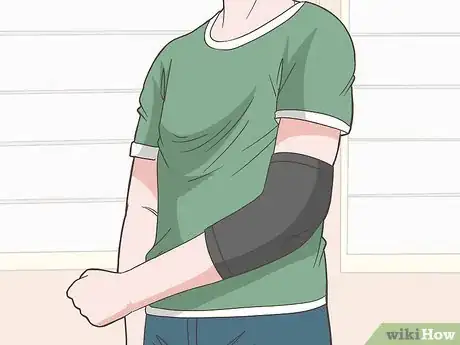







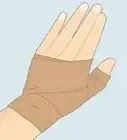
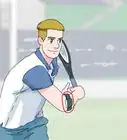

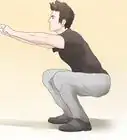



































Medical Disclaimer
The content of this article is not intended to be a substitute for professional medical advice, examination, diagnosis, or treatment. You should always contact your doctor or other qualified healthcare professional before starting, changing, or stopping any kind of health treatment.
Read More...